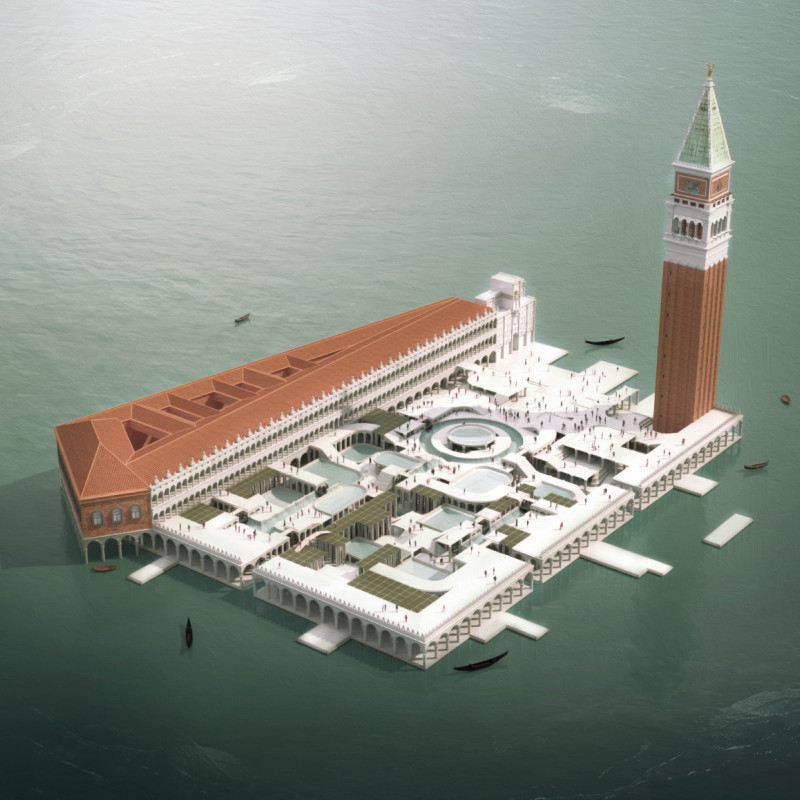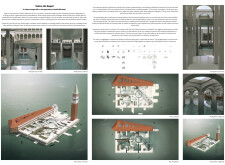5 key facts about this project
## Project Overview
“Venice, the Sequel” examines the implications of climate change on Venice, Italy, proposing adaptive architectural solutions that preserve the city’s cultural heritage while addressing rising sea levels. This project integrates the philosophical concept of metamorphosis as proposed by Emanuele Coccia, aiming to redefine urban life in an environment facing significant ecological challenges.
## Spatial Strategy
The design features a series of interconnected spaces that adapt to fluctuating tidal conditions. As water levels change:
- **At High Tide**: Specific areas become partially submerged, fostering interaction with water and allowing for unique atmospheric experiences.
- **At Low Tide**: Pathways and gathering spaces emerge, enhancing accessibility and promoting community engagement.
This strategy enables users to perceive the architecture differently depending on the tidal conditions, reinforcing the connection between urban form and the natural environment.
## Materiality and Environmental Considerations
Addressing local climate conditions, the project employs a carefully chosen material palette:
- **Glass**: This material enhances transparency and lightness, facilitating visual connections with the surrounding water.
- **Concrete**: Selected for its structural integrity, it is designed to withstand humidity and can accommodate innovative forms.
- **Wood**: Used in the roofing system, wood reflects traditional Venetian construction methods while adding warmth and texture.
The design incorporates resilient features, such as elevated structures to mitigate flooding and natural ventilation systems to optimize airflow, minimizing reliance on mechanical climate control. Additionally, communal areas are integrated to encourage public engagement and resilience in the face of environmental changes.
This careful consideration of material and sustainability strategies ensures that the project respects Venice's historical narrative while providing solutions for future urban living.



















































